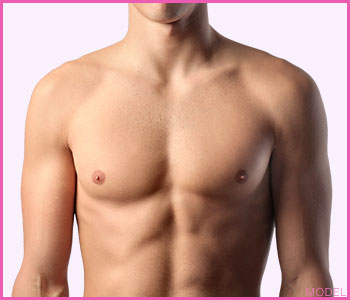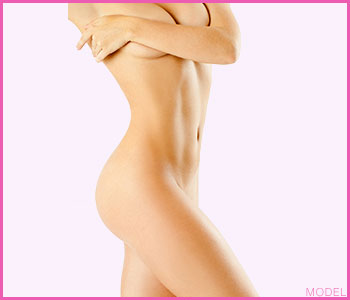Pectoral Implants
 Pectoral Implants for Men
Pectoral Implants for Men
Pectoral Implant Surgery is a cosmetic procedure specially designed for men. While beautification and self-enhancement is often thought of as a female domain, an increasing number of men are now looking for cosmetic treatments to fix minor and major problems with their bodies.
A Pectoral Implant Surgery is to man what a Breast Augmentation is to a woman. This is a precise and succinct definition of the cosmetic treatment under question. Having ‘great pecs’ is the most common locker room phrase in most gyms because no matter how much you exercise, having the most shapely and firm chest is often the hardest goal to achieve.
Hence, this cosmetic surgery is the ideal solution for men who have failed to build up their bodies even after following particular diets, doing rigorous exercises and following strenuous weight lifting regimes. Pec implants can easily give such males, whose DNA is just not cut out to support body building, the firm and bulky texture they have always wanted.
The Southwest Plastic Surgery Practice is one of the most qualified medical centers all across Silver City, Ruidoso El Paso and Amarillo. With many patients coming in for Pectoral Implants, the clinic does its best to provide individualized care and attention to each. Dr. Agullo, the Board-Certified surgeon at the center, has years of experience in cosmetics and is always there to provide emotional and mental support.
Combination Surgeries for Men – Pectoral Implants
Pectoral Implant surgery for men is becoming quite common all across the United States. Be it a desire to look and feel good or a need to have a shaped-up physique in the aftermath of an accident or illness, skillfully inserted implants give a very natural and authentic look to a man’s chest.
To make this look even more pronounced, Pectoral Implants are usually inserted along with a combination of many smaller cosmetic procedures. A liposuction is the most popular combination surgery performed at the same time as a pectoral implant is fitted. If you chose such a procedure, medically called Pectoral Etching, Dr. Agullo will define the area for fat removal using a liposuction tool. While the extra fat is removed, some padding is retained to add bulk to the chest wall.
This way, not only are the implants inserted and pocketed well within the chest tissue, the removal of the extra fat brings definition and a distinguished shape to the chest.
On the other hand, if you want to complete two separate procedures at once, you may also choose to go for a Pectoral Implant Surgery and abdominal liposuction to give your abdomen shape and outline. Because every individual has a different need, it is best to discuss these options with Dr. Agullo during the consultation phase.
Other procedures commonly combined with males are nose surgery or rhinoplasty, liposuction of the neck, fat injections to the biceps, buttocks, or calves, and hair transplantation.
Techniques Used to Insert Pectoral Implants
Pectoral Implant Surgery, though similar to Breast Augmentation in women, is quite different from the latter in a number of ways. While the silicone Implants used in Breast Augmentation are soft, those in Pectoral Surgery are hard and solid, giving a man’s chest a stiff feel. Moreover, for a woman, silicone implants are usually filled with liquid that can leak if the implant ruptures. This complication is non existent for men because the implants have no liquid in them, making them indestructible and break-resistant.
Because of these differences, the results achieved post surgery are quite varied in both genders. The techniques used in Pectoral Implants will be discussed in detail by your surgeon during the preliminary consultation. To give you an idea, it suffices to know that during the procedure, Dr. Agullo will make incisions in the armpit region. Using an endoscope, a small hole is then made in the chest within which the implants are positioned.
Pectoral Implant techniques are minimally invasive. Throughout the procedure, the chest muscles, nerves and tissue stay attached to the rib-cage and the breastbone; thus, restoring the ability to feel sensations normally.
Preliminary Considerations Prior to Pec Implant Surgery
Type of Implant for Pectoral Augmentation
Pectoral Augmentation makes use of durable silicone implants. As mentioned previously, these implants are hard yet flexible and smooth. Therefore, they make for a great layer under the pectoral muscle, making a man’s chest look firm and pronounced. During your meetings with the surgeon, you will try on different ‘sizers’ i.e. implants of varying shapes and sizes to visualize which ones would look best after they are inserted.
Type of Anesthesia for Pec Implants
For a Pectoral Implant surgery, every patient has an option to either go completely under with General Anesthesia or be partially sedated. Recovering from General Anesthesia takes a while, however, getting up and about after partial sedation is quite easy.
While this choice is completely up to the patient, a thorough medical and physical exam will be done before Dr. Agullo gives the go ahead for this decision.
Preparation & Recovery Period for Pectoral Implants
Pectoral Augmentation surgery is an outpatient procedure and takes about two hours to complete. Even though it is a relatively simple treatment compared to other cosmetic surgeries that are lengthier and more complex, adequate preparation needs to be done for a pectoral implant to give maximum results.
Needless to say, if you opt for combination surgeries, the level of preparation and the duration of the procedure will increase. What to do and what not to do are all questions handled by Dr. Agullo when you arrive for the consultation session.
During this phase, you can ask the surgeon just about anything regarding the surgery and entrust him with your concerns and reservations.
Pre-Surgery Preparation for Pec Implants
Some of the most basic guidelines to keep in mind prior to a Pectoral Implant Surgery are:
- If you are a chain smoker, prepare yourself to quit smoking at least two weeks before the surgery is scheduled. Smoking can increase chances of blood clots and other complications.
- Arrange for a friend or family member to drive you back and forth on the day of the surgery because just out of sedation, you won’t be well enough to get behind the wheel.
- Avoid putting lotions and creams on the chest just prior to the treatment.
- Don’t forget to present your ID and other documents when you arrive at the Southwest Clinic.
- Keep a loose, button-up shirt with you to avoid pain while fitting into a snug one.
Post-Surgery Recovery for Pectoral Implants
- The doctor will put bandages or make you wear an elastic vest to reduce swelling after the surgery.
- Because your chest will feel sore and sensitive, some pain will persist for at least a week or two after the pectoral implants are inserted.
- Take some time off from work and rest properly for a speedy recovery.
- Avoid exercises for at least a month.
- Regularly take medicines prescribed by the surgeon for pain and swelling.
- Full recovery and optimal results will take about 6 to 8 weeks to show. Therefore, be patient and give your body ample time to adjust to the implants.
What are the Risks and Complications to Consider for Pec Implants?
Having highly qualified and Board Certified Plastic Surgeons on-board during a Pectoral Implant Surgery significantly reduce the chances of complications arising. Dr. Agullo has many years of experience in the field of cosmetics and has performed several such surgeries on men of all ages. Hence, risks and complications resulting from this surgery are quite rare.
Nonetheless, informing patients about these adverse effects from cosmetic treatments is part of the disclosure philosophy followed by Southwest Plastic Surgery Practice. Therefore, during the consultation session, your surgeon will openly talk to you about the complications to look out for.
These include:
- Implant displacement that would need revision surgeries to be corrected.
- Asymmetry of the upper torso.
- Complications and reactions as a result of the anesthesia.
- Skin infections that can penetrate into tissues and muscles.
- Collection of fluid under the skin.
- Scarring.
- Numbness near the upper arm region.
- Lack of satisfaction with the final look and feel post-surgery.
Cost of Pectoral Implants
The cost of Pectoral Implants varies from region to region. In El Paso and Texas, this surgery can cost anywhere between $7,300 – $12,000. This cost includes fee charged by the surgeon, the cost of medical facility and equipment used and the cost of implants.
There are a number of other factors that determine this cost. For instance:
- The kind of anesthesia used, either general or local.
- The extent of augmentation needed.
- The number and length of incisions made.
- The type of implants used.
Any queries regarding the cost of the surgery can be discussed with Dr. Agullo during the consultation sessions. The surgeon understands that while this sum may be heavy on your pocket, the benefits reaped out of this investment will be long lasting and a definite boost to your self esteem and confidence.
 Body Fat Transfer: the Best way to Reshape your Body
Body Fat Transfer: the Best way to Reshape your Body